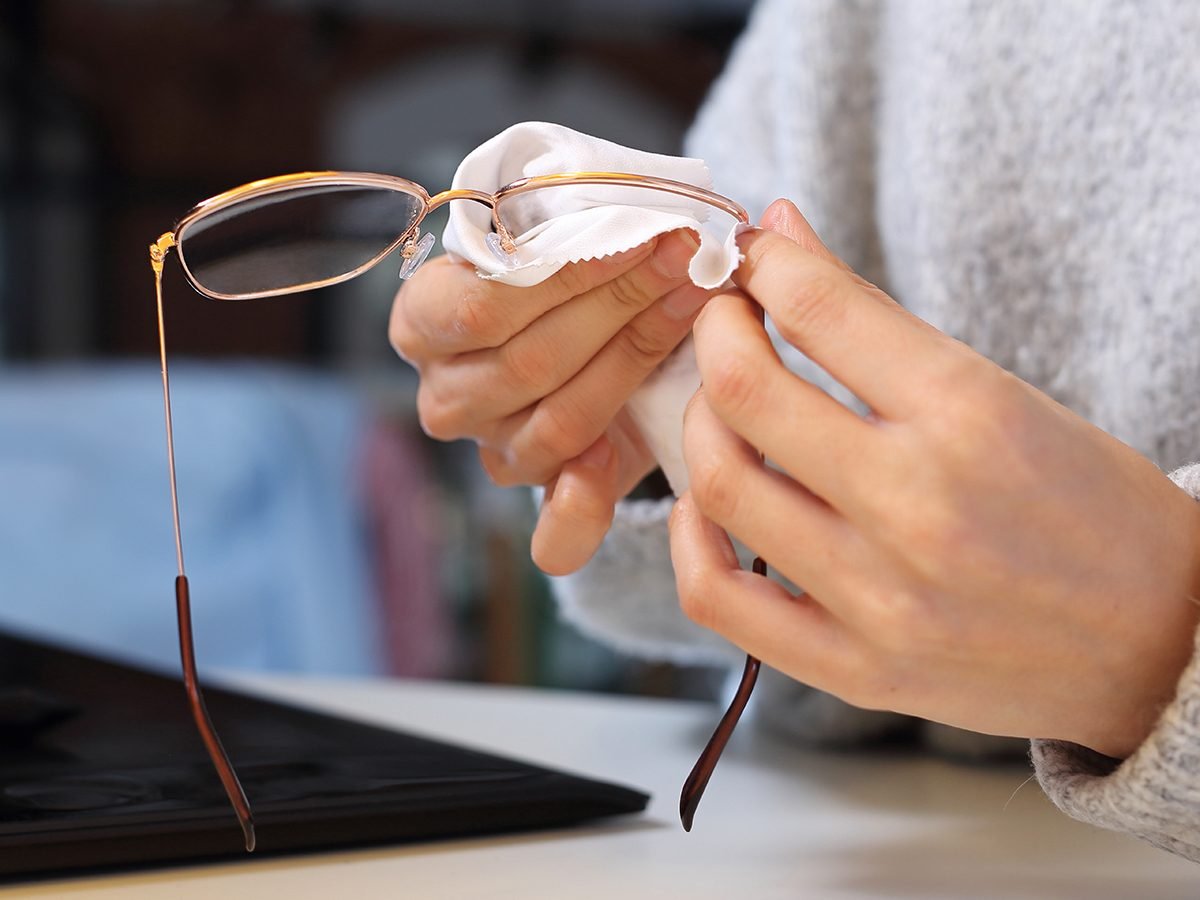
How to stop glasses from fogging up: 5 tricks that actually work
The COVID-19 pandemic brings with it a problem unique to those who wear glasses: The moment the face mask goes on, those lenses instantly fog up.
It’s an annoying quirk that boils down to the difference in temperature between your body and your glasses. When you breathe, the warm air that leaves your mouth and nose escapes through the top of your mask, turns into condensation, and fogs up the cool surface of your lenses.
Though foggy glasses are inconvenient, widespread mask-wearing remains one of the most important public health measures we have to protect ourselves against the novel coronavirus, says Dr. Anna Banerji, an associate professor at the University of Toronto’s Dalla Lana School of Public Health. Since the virus is airborne, wearing a face covering like a mask creates a physical layer of protection between you and any air droplets from infected people. “And, if you wear a mask properly, it protects someone else because your droplets aren’t going to the nose or mouth of someone and potentially infecting them,” Banerji says.
The good news? There are measures you can take to ensure your vision remains crystal clear throughout the pandemic. Here’s how to stop glasses from fogging up in five easy steps.

Use soap and water
Banerji suggests washing your glasses with soapy water and then wiping them dry. “There’s a film of soap that’s left over which might reduce the risk of fogging,” she advises. According to the National Center for Biotechnology Information, glasses get foggy because of the surface tension between the water molecules in your breath. The thin film left behind by the soapy water reduces the surface tension and causes the water molecules to spread out evenly, rather than cluster on your lenses to create fog.
It’s best to use dish soap or a basic hand soap—anything that is for sensitive skin or contains lotion might get stuck to your lenses and smear.
Find out what “herd immunity” actually means, and when it’s expected to happen.

Wear your glasses over your mask
Changing the position of your glasses might divert the warm air away from your lenses. If you’re finding that your vision gets cloudy with every breath you take, try pulling the top of your mask higher onto your face so that your glasses are sitting on top of the material.
Here’s what you need to know about the COVID-19 booster shot.

Mind the gap
You might be having trouble with foggy glasses because your mask doesn’t fit tightly enough. The result is a gap at the top of the mask, by the bridge of your nose, that lets warm air escape behind the lenses of your glasses. Make sure that your mask fits securely over your nose. If you have a mask that has an adjustable nose bridge strip, mould the strip to follow the contours of your nose for a tighter seal.
For a DIY solution, you can create a mask with an adjustable nose bridge strip by sewing a pipe cleaner or a twist tie into the top of a cloth mask. Check out more DIY face mask ideas.

Tape it down
Another way to close the gap at the top of a mask is to tape it down across the bridge of your nose. Even before the pandemic, some health care professionals who regularly wear glasses would put a strip of surgical tape along the top of their masks to prevent the warm moist air from escaping. Just make sure you’re using medical tape or sports tape that’s safe for use on skin.
Make sure you avoid these common face mask mistakes.

Use a tissue
If you’re still having problems with your glasses fogging up, try folding a facial tissue horizontally and placing it under the top of your mask at the bridge of your nose. The moisture from your breath should be absorbed by the tissue instead of escaping behind your glasses.
Next, find out what you can (and can’t) do after getting the COVID-19 vaccine.